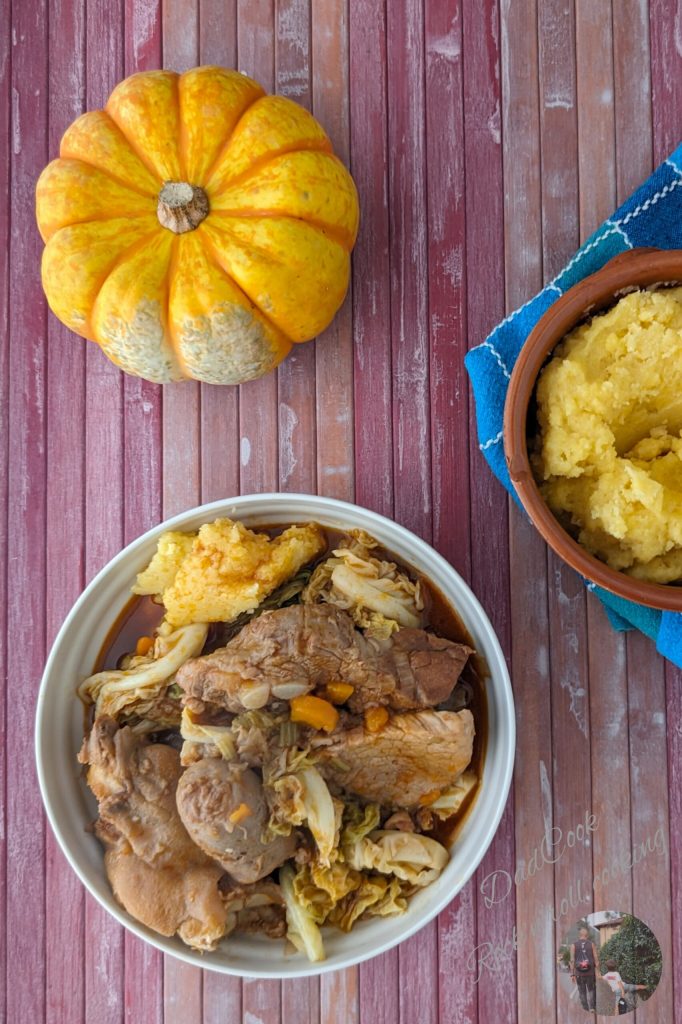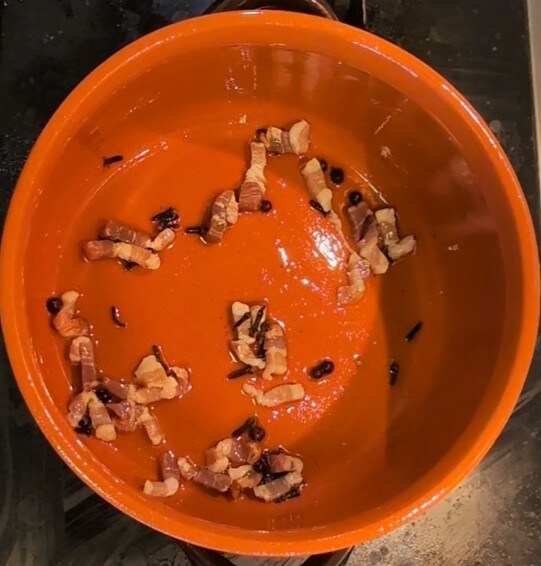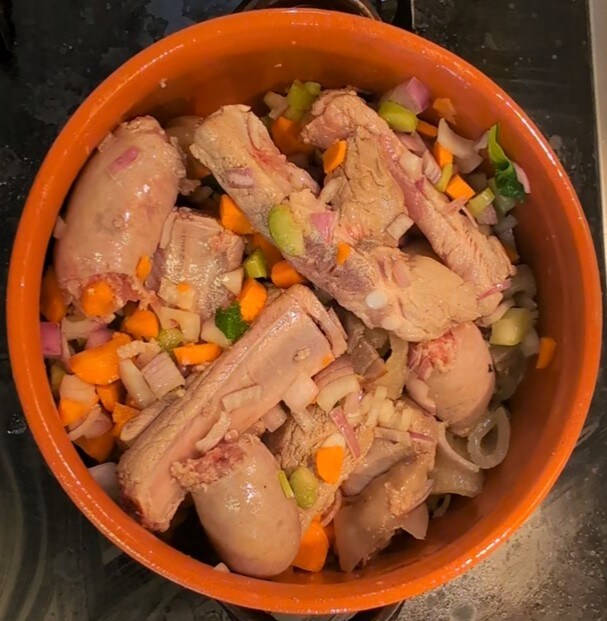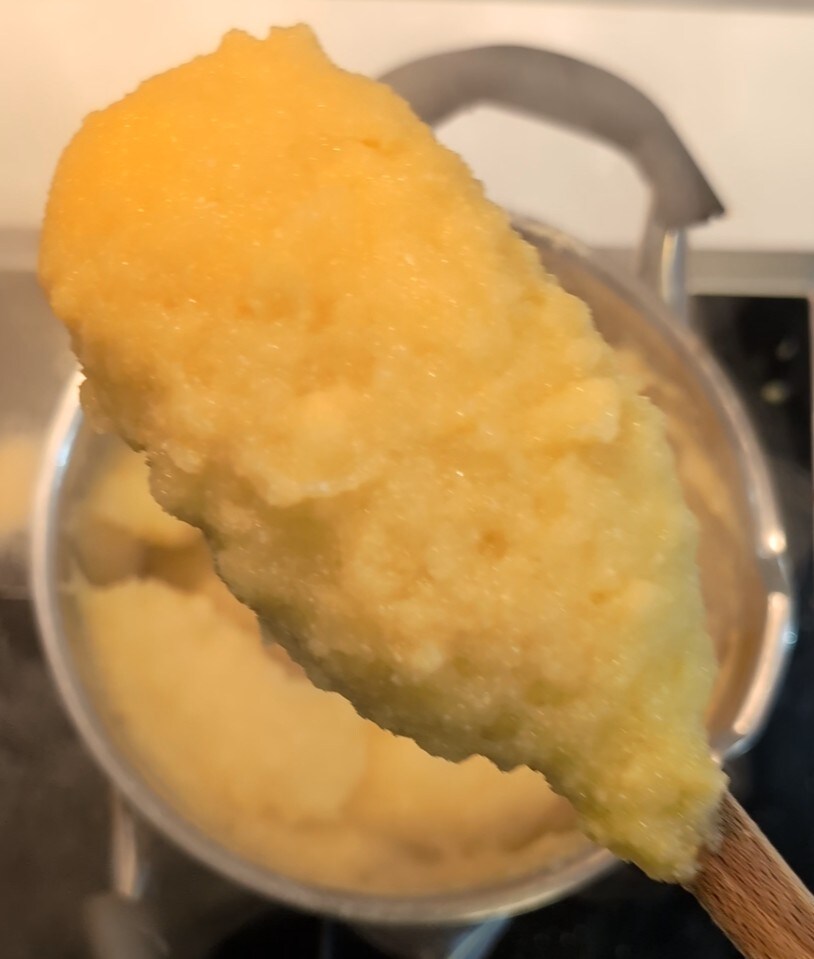Welcome to the traditional Lombard kitchen, where the enveloping aroma of a steaming cassoeula brings to mind memories of ancient villages and family gatherings. The cassoeula is a rustic and genuine dish born from peasant cuisine, prepared with pork and cabbage, representing one of the most beloved dishes of Lombardy. In this recipe, I will guide you step by step in preparing this culinary delight, ensuring that you can enjoy it in its authenticity and goodness. Prepare to immerse yourself in the gastronomic tradition of this region and discover the unique taste of cassoeula.

- Difficulty: Very Easy
- Cost: Economical
- Rest time: 10 Minutes
- Preparation time: 15 Minutes
- Portions: 4
- Cooking methods: Boiling, Slow Cooking
- Cuisine: Italian
- Seasonality: Autumn, Winter
Ingredients
- 2.2 lbs pork ribs
- 1.1 lbs pork rind
- 1 Pork foot
- 4 slices pork loin (Optional)
- 2.2 lbs savoy cabbage
- 2 carrots
- 2 stalks celery
- 1 onion
- 4 1/4 cups meat broth
- 1 glass white wine
- 2 tbsp tomato paste
- 2 tsp extra virgin olive oil
- 1 tsp salt
- 1 pinch black peppercorns
- 10 berries juniper
- 10 cloves
Tools
- 1 Terracotta Pot
Steps
Cassoeula is a typical Lombard dish made with a few simple ingredients: cabbage, pork sausages, ribs, pork foot, or alternatively snout, ear, or tail. First of all, it’s best to start the day before due to the long cooking time of the rind and foot, which we can boil in the same pot for at least an hour.

After boiling the feet, they can be divided into smaller parts, while the rind can be cut into pieces. It is also essential to uniformly chop the vegetables for the sauté, including celery, carrot, and onion.

Now, in a pot, preferably terracotta as tradition dictates, sauté the pancetta with cloves, black peppercorns, and juniper berries.

Next, add the vegetable sauté along with all the meat: ribs, sausages, foot, and rind. Sauté everything together for a few minutes before adding the white wine to deglaze.

Then cover everything with meat broth or alternatively, hot water is fine, and maybe add a stock cube. The important thing is to cover all the ingredients to ensure even cooking.

Tomato paste is also indispensable in this recipe to best flavor the sauce that will be created at the end of cassoeula cooking, and as tradition has it, we will use it to season the polenta. Cook everything with the lid on for at least 60 minutes over low heat, until the broth has reduced and the rib bone comes off easily by hand.

Finally, if you want to add some extra pieces of meat, besides sausages and ribs, since the amount of meat to consume is limited, you can include, as I did, some pork loin slices. Before adding the cabbage, remember to blanch it separately for a few minutes. Then put the cabbage and the loin at the same cooking time, 20 minutes before completing the preparation of cassoeula, thus ensuring the right consistency of the cabbage without it becoming too crispy or too soft to break during cooking.

To conclude, while waiting to finish cooking the cassoeula, start preparing the polenta in the last 20 minutes, so it will be served hot and steaming along with everything else.

The cassoeula, in its traditional version, is ready, and be sure to serve it steaming, accompanied by plenty of polenta and a bit of sauce to flavor it all.
Enjoy your meal and DadCook!

Some curiosities about cassoeula
The name “cassoeula” comes from the pan in which the soup is cooked, called “cassola“.
The cassoeula is a traditional dish of Lombard cuisine but is also widespread in other regions of northern Italy, such as Veneto, Trentino-Alto Adige, and Emilia-Romagna.
The cassoeula is a winter dish, usually served during Christmas and New Year’s Eve. The main ingredients of cassoeula are pork, beef, cabbage, pork ribs, cotechino, and sausage.
The cassoeula is a very tasty and flavorful dish, but it is also very caloric.
The cassoeula is a very ancient dish, whose origins date back to the Middle Ages.
The cassoeula was originally a poor dish, made with the ingredients that were available in winter.
The cassoeula is a very versatile dish, which can be customized according to your tastes. For example, you can add other ingredients, such as mushrooms, potatoes, or carrots.
Cassouela: a winter dish and its ideal wine
The cassoeula is a traditional dish of Lombard cuisine, prepared with pork, beef, cabbage, potatoes, and sausages. It is cooked in a terracotta pot, called cassoeula, for several hours until the meat is tender and the broth is flavorful. The ideal wine to pair with cassoeula is a red with good acidity, capable of balancing the richness and greasiness of the dish.
The recommended wines are: Barbera or Bonarda from Oltrepò Pavese, which are typical wines from the area of origin of the cassoeula and have good acidity and a fruity bouquet. Lambrusco, which is a sparkling wine with good acidity and a fruity flavor. Refosco, an intense red wine with good acidity and a decisive tannin. Cabernet Franc, a fruity red wine with good acidity. In general, it is preferable to choose a young wine that enhances the freshness of the dish. Here are some specific pairing tips: If you prefer a cassoeula with a more intense taste, you can opt for a wine with greater structure, such as a Barbera d’Asti or a Cabernet Franc. If you prefer a cassoeula with a more delicate taste, you can opt for a wine with less structure, like a Lambrusco or a Bonarda from Oltrepò Pavese. If you prefer a cassoeula with a spicier taste, you can opt for a wine with spicy notes, such as a Refosco.
Ultimately, the ideal pairing between wine and cassoeula is a matter of personal taste.
FAQ (Frequently Asked Questions)
Can I use sausage instead of salami?
Yes, you can certainly replace the salami with your preferred pork sausage, ensuring it’s of the mild type and not spicy to respect tradition.

